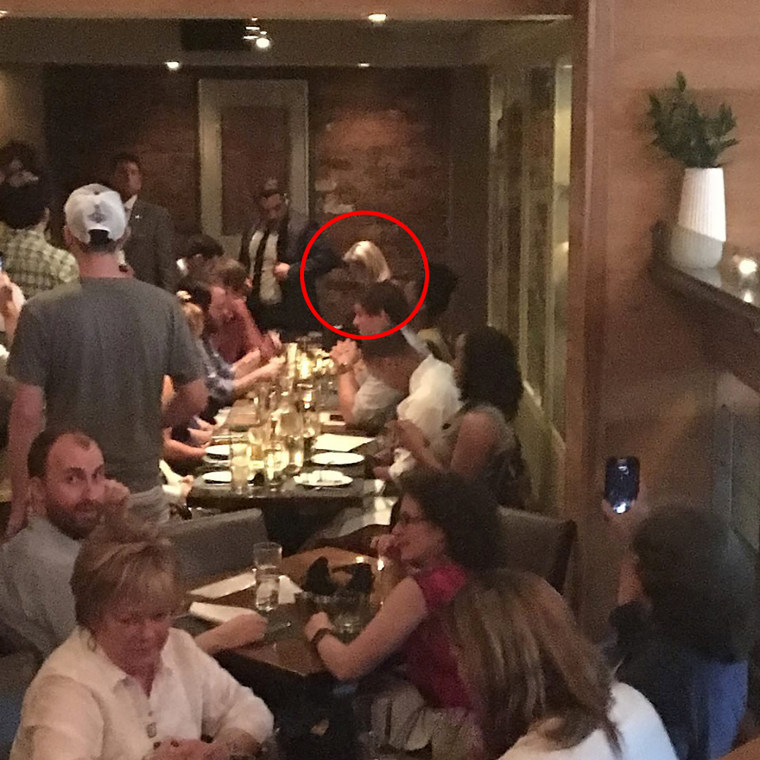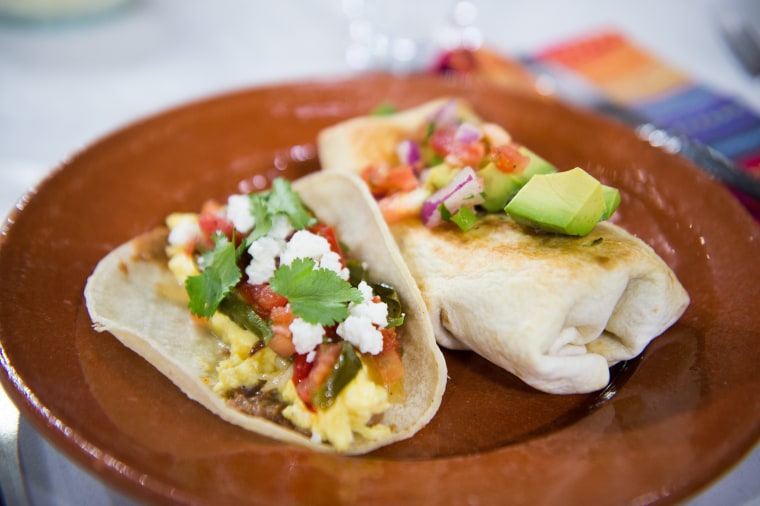At first glance, it sounds bizarre, at the very least. Anti-immigrant government officials spending their days locking up undocumented children and their parents who came across the border from Mexico, and their nights... enjoying Mexican food?
Yet this phenomenon has rippled the Trump administration. Just this week — which saw the president’s spokespeople try to justify a program that ripped Latino kids from their parents at the U.S.-Mexico border until even Trump couldn’t do it anymore — we were treated to the spectacle of Department of Homeland Security Secretary Kirstjen Nielsen heckled at a high-end D.C. Mexican restaurant. Two days earlier, Trump’s senior Wormtongue, Stephen Miller, was called a “fascist” at another fancy-pants Mexican restaurant in the nation’s capital.
They were following, of course, the steps of their boss, who infamously tweeted a photo of himself enjoying a taco salad for Cinco de Mayo in the midst of a campaign in which he denigrated Mexicans, forever attaching himself to a not-bad Mexican dish in the process.

The dinner choices come off as trolling at its worst and at its stupidest — the vast majority of the kiddies caged are actually Central Americans. But the fact is that racists hating Mexicans but loving Mexican food is nothing new. Before I debated arch-conservative and former Colorado congressman Tom Tancredo in 2010, we enjoyed tamales at an iconic Denver Mexican restaurant. When I helped to get hate crime charges filed against four white supremacists who tried to murder a Latino in Huntington Beach, I found photos of two of them enjoying burritos from Del Taco, a not-bad-at-all Southern California fast-food Mexican chain. Jim Gilchrist, the founder of the Minuteman Project, who spent most of last decade patrolling the U.S.-Mexico border, admitted to me once that his favorite meal was taquitos (and that he owned a Chihuahua).
And in an infamous Huntington Post 2016 article at the Republican National Convention, all Trump supporters interviewed admitted to hating Mexicans—and loving the cuisine.
There are two ways to approach this. The one popular in woke social media right now is that this is just further proof of gringos appropriating Mexican culture. They consider it in the same vein as hipsters turning mezcal — historically, the moonshine of Mexico and a workingman’s drink — into high-priced artisanal foolery or white folks adopting Dia de los Muertos, Frida Kahlo and lucha libre motifs as their own.
I actually take heart in knowing that anti-immigrant types love their burritos and chalupas and tequila, because it always wasn’t like that.
That line of thought connects to what the legendary progressive historian Carey McWilliams called the “Spanish fantasy heritage” of the Southwest — the idea that Americans take on parts of Mexican culture as their own because they believe that actual, living Mexicans don’t appreciate it the way gringos do. It’s an easy answer to explain how racists can consume Mexican food with such glee and hate.
But as someone who literally wrote the book on Mexican food in the United States, I don’t buy it. And I actually take heart in knowing that anti-immigrant types love their burritos and chalupas and tequila, because it always wasn’t like that — which means that, while Latinos might be losing political and social battles right now, we’re winning the war for the future of this country.
In the initial Manifest Destiny confrontation between Mexicans and Americans, Mexican food for gabachos was weaponized against Mexicans to paint them as subhuman. In my book, I cited a 1830s letter written by a Texan soldier shortly after the state’s Revolution. In it, he claimed that several cows died after eating grass off a field that was the site of a battle years earlier, because the soil was contaminated with the chile-spiked blood of Mexican soldiers.

It’s from this same well that Americans created dozens of food-based insults to malign Mexicans: beaner, greaser, pepper belly, taco bender, roach coach and so many more. “Aside from diet,” the acclaimed borderlands scholar Américo Paredes wrote in 1978, “no other aspect of Mexican culture seems to have caught the fancy of the Anglo coiner of derogatory terms for Mexicans.”
Those slurs have mostly faded away, but the idea that Mexican food is dangerous continues to exist in some sectors of American society.
The fact is that no one enjoys Mexican food more than Americans and it’s been that way almost from the start of Americans eating Mexican food. And, as Latinos have migrated across their historical strongholds in the American Southwest, East Coast and Florida, it’s Latino restaurateurs who open Mexican restaurants in good ol’ boy country that help make the Trump base — more than any politician or activist — realize that Latinos are, you know, human.
Mexican food remains the great ambassador for Latino acceptance in the United States.
I’ve documented this as a writer for the Southern Foodways Alliance, an organization based out of the University of Mississippi that documents the South via its cuisine. In 2015, I conducted oral histories of Mexican restaurants in Kentucky. Time and time again, I found that Mexican entrepreneurs went into small towns in the Bluegrass State and not only taught Southerners about Mexican food, but also about the worth of Mexicans themselves. It has become such a surefire way to integrate into and then grow with a community that I also found Guatemalan, Cuban, Argentine and Salvadoran immigrants open Mexican restaurants from Louisville to tiny Danville. It’s harder to demonize Pedro and Maria when they serve you giant margaritas and sizzling platters of fajitas every night and sponsor your kids’ Pee Wee football team.
Mexican food remains the great ambassador for Latino acceptance in the United States. It’s about the last thing left that can humanize Trumpsters — because what human hates Mexican food?
In fact, people like Nielsen, Miller and Trump should be subjected to a full month’s worth of “Mexican” food served on tables by the farmworkers and slaughterhouse employees at the bottom of the food chain, the line cooks that Anthony Bourdain continuously praised throughout his career and the waiters and the lavaplatos who wash the plate at the end of every night. Those Americans would have some stories for our leaders. Because while the arc of the moral universe is long, it bends toward Reconquista.
Gustavo Arellano is the California columnist for the Los Angeles Times opinion section, and a lifelong resident of Orange County, California, where he's reported on the craziest county on Earth for over 16 years.

